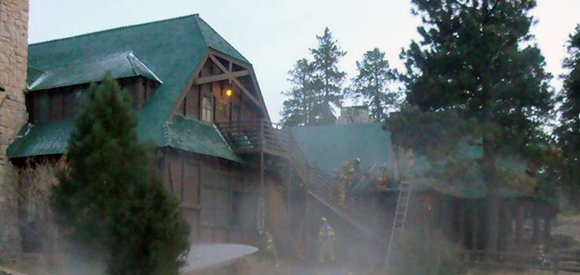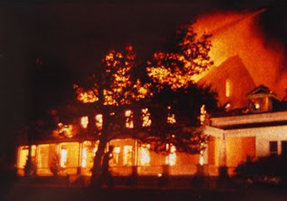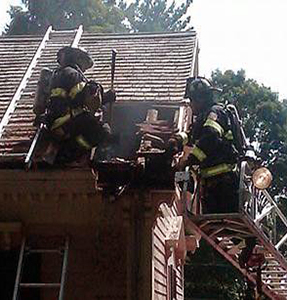
My appreciation for historic buildings began while I grew up in a house that was built in 1850. For most of my childhood, the house was heated with a wood stove, and fire safety was certainly a concern for my parents. As I grew older, I began to understand many of the fire safety concerns inherent with older construction and the reasons for my parents’ concerns became clear to me.

As I helped my dad with construction projects, he would point out fire concerns, such as the old wood that had been curing and drying out for well over 100 years. Or how there were no boards against the wall between the first and second floors, which I now know to be called balloon-frame construction. At the time, what balloon-frame construction meant to me was, “Don’t drop the hammer, or it’ll be lost behind the wall downstairs.” What I didn’t appreciate at the time was that it also meant that a fire could quickly extend all the way up and through the building. Without this fire-stopping measure built into the building, a fire on the first floor will quickly extend to the upper floors, attic, and roof. Because of this a fire in a house with this type of construction will spread very rapidly.
Throughout my career I have been assigned the responsibility for fire protection in a variety of historic buildings, which served to enhance my appreciation of these irreplaceable resources. I had the opportunity to learn about successful fire protection firsthand while working at Bryce Canyon National Park. As a ranger and firefighter, I responded to numerous alarms in the Bryce Canyon Lodge, along with spending time conducting preplans and participating in training to practice specific firefighting tactics for this grand historic lodge. A few seasons prior to my arrival some of my coworkers had suppressed a fire in the kitchen of the lodge. Good preplanning and training resulted in minimal damage to the lodge. The park and concessionaire placed fire protection as a top priority for this building. There have been numerous close calls with fire incidents in this lodge, yet fire prevention efforts have been successful in preserving this wonderful lodge for generations to come. Check out the Flashback Presentations page [internal NPS only] to learn about a more recent fire in this lodge that was successfully extinguished with minimal damage.
What's the Danger?

To protect our buildings and occupants from the dangers of fire we must first know what our greatest risks are. In researching NPS fire incidents in historic buildings for this article, I have learned that there are some common causes of fires in our buildings.
Electrical
The most common cause of fires in historic structures in the National Park Service is related to electrical malfunctions. Some of the examples of electrical fire dangers are extension cords used on a long-term basis, overloaded circuits, and outdated and faulty wiring. Remember that extension cords should not be a permanent solution. Have your park electrician and/or structural fire coordinator go through your building with you to help identify any potential dangers.
Cooking and Kitchens
Unfortunately the NPS has experienced many fires that originated in kitchens and cooking facilities. Properly maintained sprinkler systems can greatly minimize fire damage and danger to guests and employees.
Heaters and Boilers
Numerous fires have been caused by problems with the heating systems in historic structures. Maintenance crews should regularly inspect all heating systems and promptly address any problems.
Arson
Unfortunately, many of our historic buildings are vacant and become a target of those who, for varied reasons, purposefully cause a fire. A properly maintained sprinkler and alarm system can help minimize fire damage, regardless of the cause.
Wood Stoves and Chimneys
A very common cause of fires in our parks is the improper use of wood stoves and fireplaces. Ensure that the stove and chimney are properly installed, cleaned at least yearly, and always used appropriately and never left unattended.
Last updated: October 13, 2016
